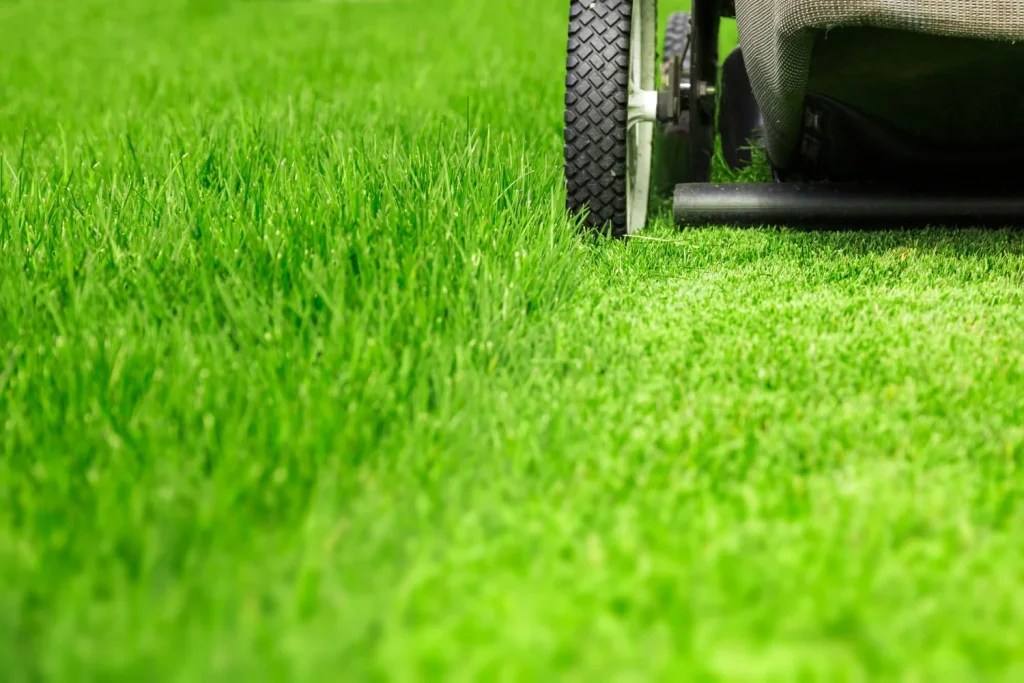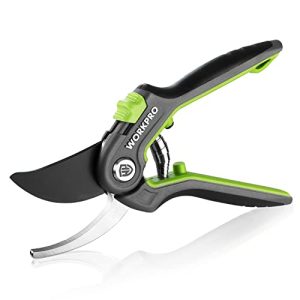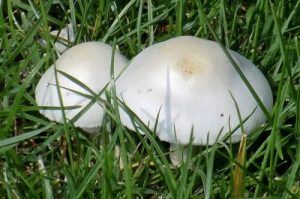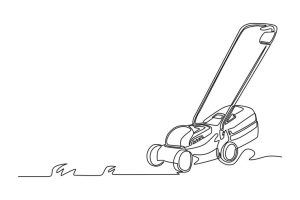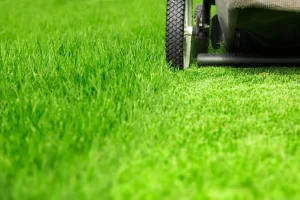Have you ever wondered about the perfect timing to mow your lawn after fertilizing it? You’re not alone.
Many homeowners like you strive for a lush, green lawn but are unsure of the best practices to achieve it. Cutting the grass too soon might ruin your efforts, while waiting too long could lead to an overgrown jungle. The timing is crucial and can make the difference between a thriving lawn and a patchy one.
Imagine transforming your yard into the envy of the neighborhood, simply by knowing when to cut the grass after fertilizing. Stick with us as we unlock the secrets to a perfectly timed mow that will keep your lawn looking its absolute best.
Optimal Timing After Fertilization
Finding the right moment to mow your lawn after fertilizing can make a big difference in achieving that lush, green expanse you desire. Timing is crucial because it affects how well the fertilizer works and how healthy your grass becomes. Understanding the optimal timing after fertilization ensures that your lawn gets the full benefit of the nutrients without any disruption.
Impact Of Fertilizer Type
Different fertilizers release nutrients at different rates, influencing when it’s best to mow. Quick-release fertilizers provide immediate nutrients, so you might wait a few days before mowing to allow the grass to absorb them fully. On the other hand, slow-release fertilizers disperse nutrients over time, offering more flexibility with your mowing schedule.
Consider what your lawn needs. If it’s a quick fix for a nutrient deficit, quick-release might be your best bet. For sustained growth, slow-release is often recommended. By understanding the type of fertilizer used, you can plan your mowing to maximize its effectiveness.
Weather Conditions
Weather plays a critical role in deciding when to mow after fertilizing. Rain can wash away granular fertilizers, affecting their efficiency. If rain is forecasted, it might be wise to delay mowing until after the rain to ensure the fertilizer is absorbed properly.
Hot and dry conditions can also impact how quickly grass absorbs nutrients. During such times, waiting an extra day or two before mowing might help your lawn retain more moisture and nutrients. Have you ever noticed how much greener your lawn looks after a well-timed mow following a light rain? Timing and weather can make all the difference.
By carefully considering these factors, you can choose the best time to mow, ensuring your lawn stays healthy and vibrant. Have you found a particular strategy that works best for your lawn? Share your experience with others who might be navigating the same seasonal challenges.
Signs Your Lawn Is Ready
Fresh green shoots and steady growth indicate your lawn is ready for mowing. Wait 24-48 hours after fertilizing. This allows nutrients to absorb, ensuring healthy grass.
Understanding when your lawn is ready to be cut after applying fertilizer is crucial for maintaining its health and appearance. After fertilizing, your grass needs time to absorb nutrients effectively. But how do you know when it’s the right time to mow? Look for specific signs that your lawn is ready, ensuring you don’t compromise its growth.Visual Indicators
A healthy lawn presents clear visual cues. Look for a vibrant green color, indicating that your grass has successfully absorbed the nutrients. If your lawn appears patchy or yellow, it might need more time or additional care before cutting. Check for evenness in the grass height. Uneven growth may suggest that the fertilizer hasn’t been evenly absorbed. Once the grass looks uniform and lush, it’s a good sign that it’s ready for trimming.Growth Patterns
Observe the growth rate of your grass. Fertilized lawns tend to show a noticeable growth spurt. When you notice that the grass has grown beyond its usual height, it’s a clear indicator that it’s thriving on the nutrients. Consider the time since fertilization. Generally, waiting about a week allows the fertilizer to fully work its magic. This waiting period ensures that the nutrients are adequately absorbed, promoting robust growth. What growth patterns have you noticed in your own lawn? Engaging with your grass’s growth cycle helps you become more attuned to its needs. Remember, a patient approach can yield a healthier, more vibrant lawn.Tools For Effective Mowing
After fertilizing your lawn, selecting the right tools for mowing becomes crucial. The right equipment ensures that your grass remains healthy and vibrant. But how do you choose the best tools for effective mowing? Let’s dive into the details.
Lawn Mower Types
Choosing the right type of lawn mower can make a significant difference in the health of your grass. If you have a small yard, a push mower might be sufficient. They’re cost-effective and give you a great workout!
For larger lawns, consider a gas or electric mower. Gas mowers offer more power, but electric models are eco-friendly and quieter. Riding mowers are perfect for expansive areas and save time, but they come with a higher price tag.
Have you ever tried a robotic mower? These smart gadgets can mow your lawn autonomously. They’re perfect for tech enthusiasts who love convenience.
Blade Maintenance
Sharp blades are essential for a clean cut. Dull blades tear grass, leading to ragged edges and increased vulnerability to diseases. Make it a routine to check your blades every few weeks during the mowing season.
Sharpening blades is a simple task. You can use a sharpening stone or take them to a professional. A sharp blade not only improves the health of your grass but also reduces mowing time.
When was the last time you checked your mower’s blade balance? An unbalanced blade can cause uneven cuts and damage your mower. Balance them regularly for optimal performance.
Remember, investing time in maintaining your mower can save you trouble and ensure your lawn looks its best after fertilization. Have you noticed the difference a well-maintained tool can make?

Credit: www.facebook.com
Techniques For Healthy Grass
Fertilizing your lawn is essential for vibrant, healthy grass. But timing your mow after fertilizing is crucial. Cutting grass too soon can affect its growth and health. Understanding the right techniques ensures your grass stays lush and strong.
Mowing Height
Set your mower to the correct height. Taller grass shades the soil, reducing weed growth. It also retains moisture better. This is especially important after fertilizing. Aim for a mowing height between 2.5 to 3.5 inches. This height encourages deeper root growth.
Cutting Frequency
Frequent mowing keeps grass healthy. But avoid cutting more than one-third of the grass height at once. Doing so can stress the grass. After fertilizing, wait 1 to 2 days before mowing. This allows the fertilizer to soak into the soil. Adjust your mowing schedule based on grass growth. Faster growth may require more frequent cutting.
Common Mistakes To Avoid
Cutting grass after fertilizing requires careful timing. Many make mistakes that can harm lawns. Knowing what to avoid helps keep grass healthy.
Over-mowing Risks
Mowing too often stresses the grass. This can weaken the roots and reduce growth. After fertilizing, grass needs time to absorb nutrients. Cutting too soon removes vital energy from the blades. Waiting a few days lets the grass recover and grow stronger.
Ignoring Weather Factors
Weather affects how grass absorbs fertilizer. Rain can wash away nutrients, while dry spells make absorption harder. Before mowing, check the forecast. Give the fertilizer time to work under ideal conditions. Adjust mowing plans based on weather patterns for best results.
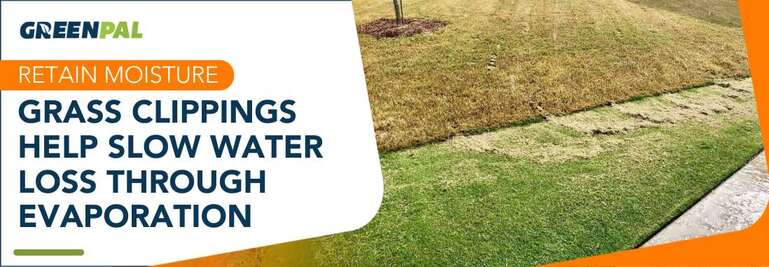
Credit: www.yourgreenpal.com
Expert Tips For Lawn Care
Wait a few days after fertilizing before mowing. This allows nutrients to settle in the soil. Cutting too soon can disturb growth, reducing the fertilizer’s effectiveness.
Taking care of your lawn can often feel like a guessing game, especially after you’ve fertilized and are itching to see those lush, green results. Knowing the right time to cut your grass post-fertilization is crucial for maintaining a healthy lawn. This section is packed with expert tips to help you make the best decisions for your lawn care routine.Seasonal Advice
Each season brings different challenges and opportunities for your lawn. In spring, when grass begins to grow vigorously, waiting a few days after fertilization before mowing can give your grass the nutrient boost it needs. Summer, however, demands a different strategy as heat can stress your lawn. Keep your grass a bit longer to shade the roots and conserve moisture. In the fall, when preparing your lawn for winter, consider cutting your grass to a moderate height after fertilization. This helps in reducing disease risk and promotes strong root growth. Winter brings dormancy, so there’s no need to mow until spring, allowing your grass to rest and rejuvenate.Professional Recommendations
Lawn care experts often suggest waiting 24 to 48 hours after fertilization before mowing. This allows nutrients to penetrate the soil and the grass to absorb them efficiently. Additionally, using a mower with sharp blades can prevent tearing, which might stress the grass. Another recommendation is to water your lawn after fertilizing, which helps dissolve and distribute the nutrients. But, remember to let the grass dry before you cut it to avoid clumping. Regularly maintaining your mower ensures a clean cut, promoting healthier grass growth. Think about this: how often do you sharpen your mower blades? This small task can make a big difference in your lawn’s health and appearance. By following these tips, you set the stage for a vibrant, resilient lawn that’s the envy of the neighborhood.
Credit: www.masterlawn.com
Frequently Asked Questions
How Long Should I Wait To Cut Grass After Fertilizing?
Wait 24 to 48 hours before mowing after fertilizing. This allows nutrients to absorb properly. Ensure soil moisture is adequate to help the fertilizer penetrate. Keep your lawn healthy by following these guidelines.
How Long Does It Take For Fertilizer To Absorb Into Grass?
Fertilizer typically absorbs into grass within 24 to 48 hours after application. Ensure proper watering to aid absorption. Granular types may take longer, while liquid fertilizers work more quickly. Follow the instructions for best results and avoid over-fertilization to prevent lawn damage.
Regular maintenance ensures healthy grass growth.
What To Do After Fertilizing A Lawn?
Water the lawn lightly to help the fertilizer absorb into the soil. Avoid mowing for 24-48 hours post-fertilization. Keep pets and children off the grass during this period. Monitor weather conditions; avoid watering if rain is expected. Check for any signs of fertilizer burn and address promptly.
How Long To Wait To Mow After Lawn Treatment?
Wait 24 to 48 hours after lawn treatment before mowing. This ensures chemicals are absorbed effectively. Always check product instructions for specific recommendations.
Conclusion
Timing is crucial for cutting grass after fertilizing. Wait a few days. Allow nutrients to absorb fully. This ensures healthy, lush growth. Mowing too soon disrupts the process. Patience leads to a greener lawn. Observe the grass. Look for signs of growth.
These are indicators it’s time to mow. Don’t rush the process. Proper timing enhances lawn health. Understand the needs of your grass. Each lawn is unique. Adjust your mowing schedule accordingly. Your patience pays off with a vibrant lawn. Enjoy the beauty of well-timed care.
Happy mowing!

